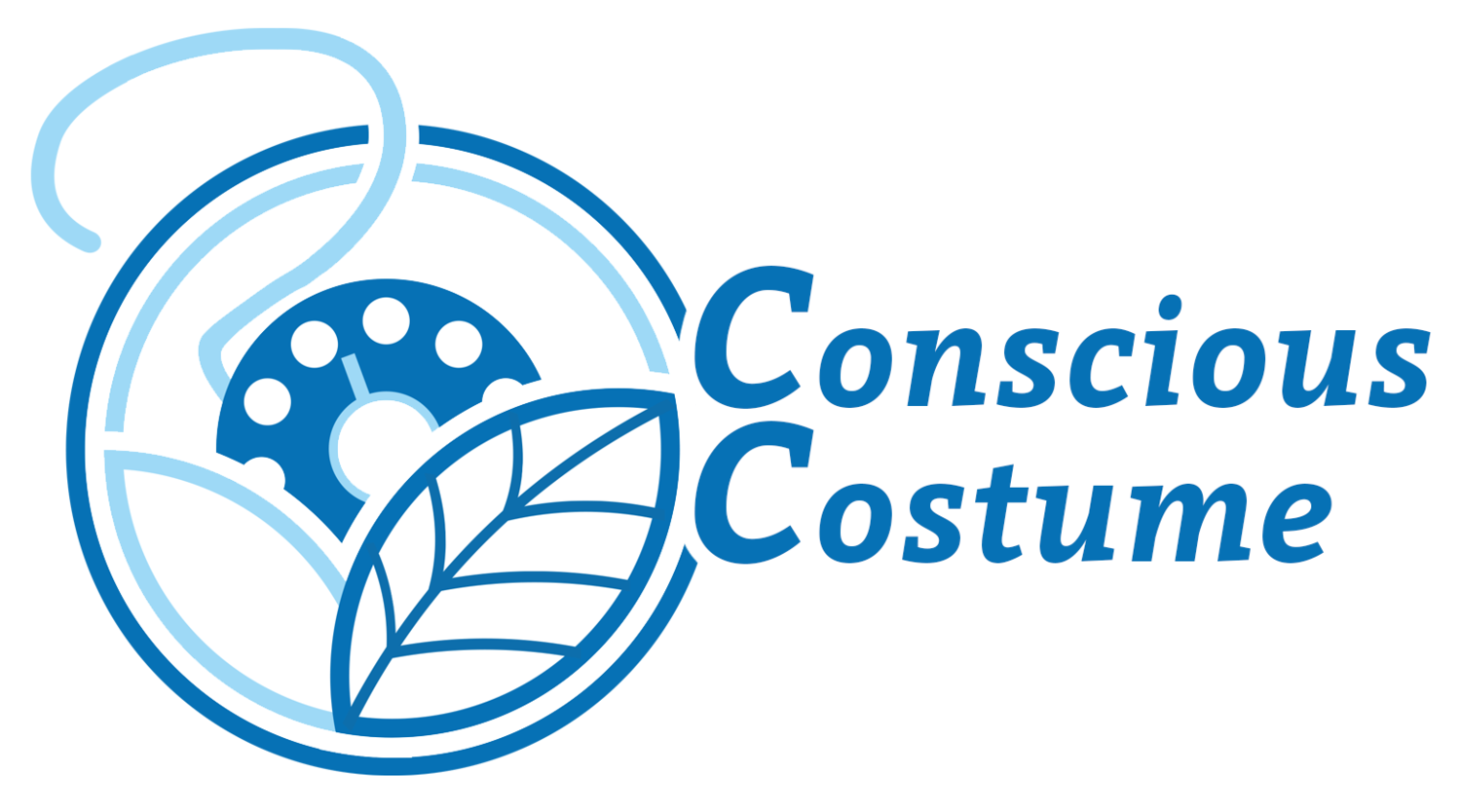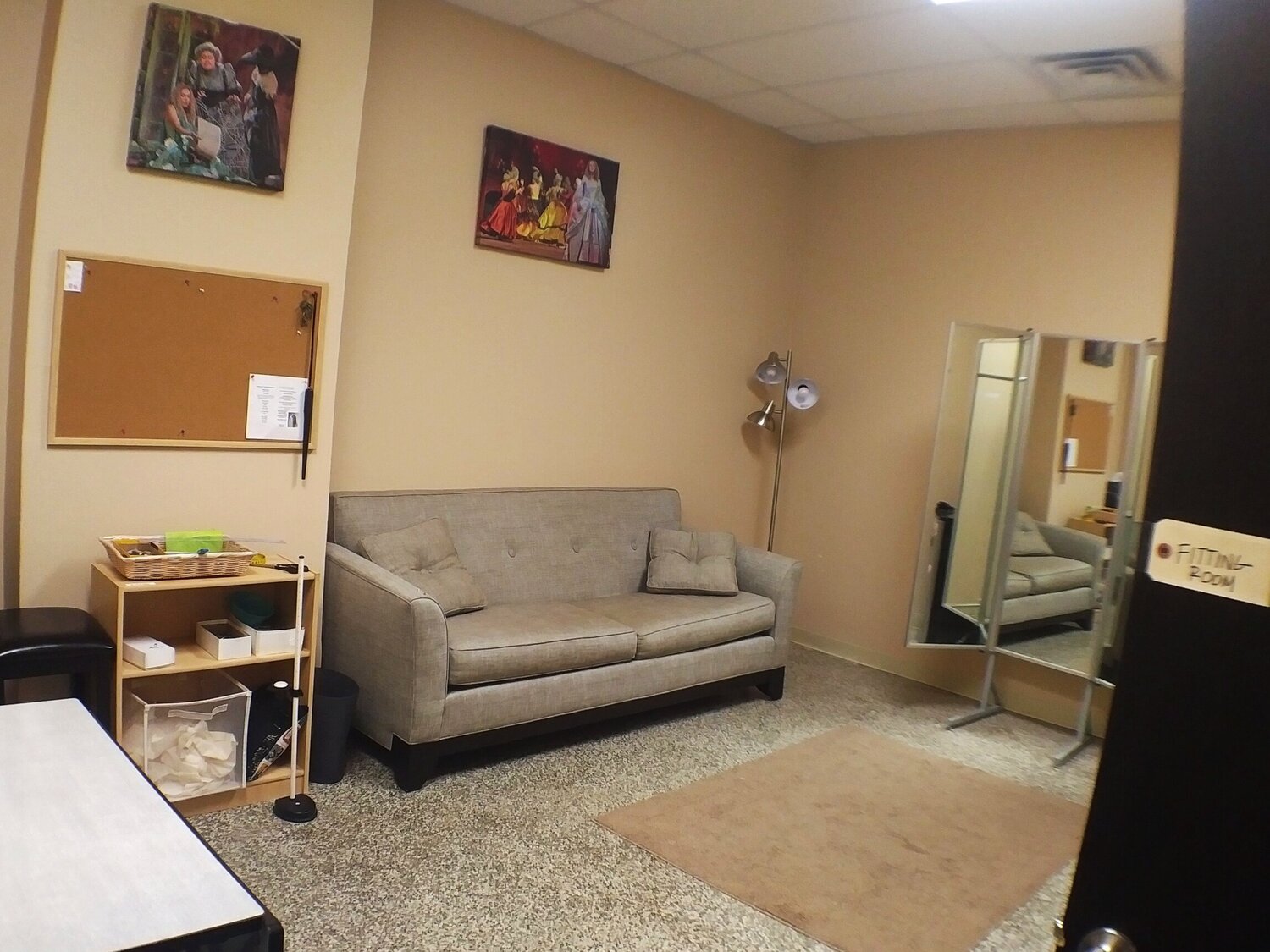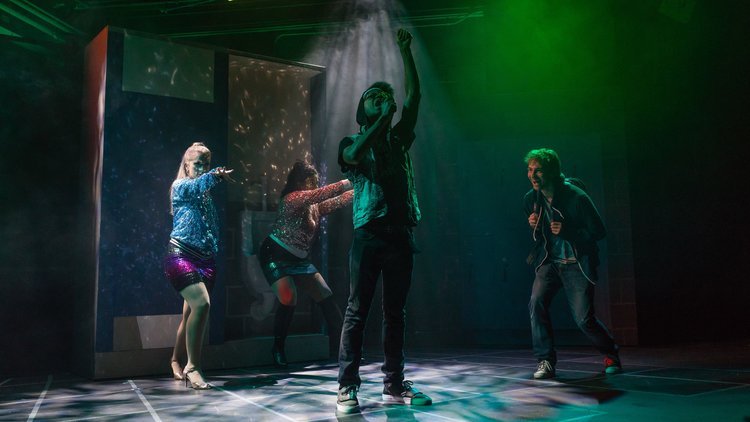By: Kristen P Ahern
People constantly ask for Podcast recommendations and it’s taken a long time to curate a list of Podcasts that I enjoy and find useful as a white, cis, bi, environmentally conscious, socially aware, history loving, character designing, theatre artist who is constantly striving to be better in both her work and her life.
General Theatre
Howlround: Theatre Commons: They rebroadcast other podcasts under the Howlround heading and amplify important topics. Some of my recent favorites are From the Ground Up (devising with an emphasis in Chicago) and Daughters of Lorraine, two of my former classmates discussing important black, feminist theatre through an academic and historic lens.
Broadwaysted: Drinking, theatre games, iconic Broadway guests, fun facts, and interviews. It’s great for staying in touch with what is happening in New York theatre (mostly musicals) though it sometimes has a narrow focus on performers and commercial musicals. I’ve often looked up the shows mentioned here to stay in touch with what’s happening. UPDATE: I have unsubscribed, maybe it’s just during the pandemic but I wasn’t finding their conversation as enjoyable while the industry is pretty much inactive.
Off Book: The Black Theatre Podcast: I was reminded in taking an African American theatre history class in grad school how under-educated I am in black theatre history so I listen to make sure that I’m staying informed about what’s happening in theatre of color. Like other New York based podcasts, it has a clear New York focus but they get on a variety of creatives including performers, choreographers, directors, playwrights, etc...
NEW The Smartist: Finally someone has created a resource for theatre people (and other artists) and business/finance! The Smartist is the podcast portion of Smartistry which was created to help artists have more sustainable careers instead of burning out.
Design/Costume
In 1: The Podcast: The only podcast (that I’m aware of) that focuses exclusively on interviewing designers of live performance. It’s terrific to hear about how some of the best known designers got their start. Could it use more costume designers? Yeah.
Frock Flicks: Terrific, often snarky, reviews of your favorite costume dramas. All of their social media is great and I’m only just getting into the podcast but definitely enjoying it. They work in the costume industry so they get why anachronisms get designed in, but that doesn’t stop them from being annoyed by it!
Voice of Costume: A costume designer centered podcast. Unfortunately film focused rather than taking a broad spectrum look at costume design (and I personally think we are too siloed) but it is great hearing iconic designers describe their early career and process.
Dressed: The History of Fashion: They cover hot topics in fashion history and some underrepresented gems. Nothing groundbreaking here but a really fun listen and I’ve definitely learned some things even as someone with a solid foundation in fashion history.
NEW Dirty Laundry: Okay, I haven’t listened to this one yet….because no episodes are out yet and it was only announced a few days ago BUT I promise to update this post when I hear it. However I had to include it because it’s the intersection of costumes, environmental and ethical issues around costumes. Host Johanna Pan plans to tackle all the sticky topics like cultural appropriation, fatphobia, transphobia, safety, environmental impacts, labor issues and more in the professional costume industry. Can’t wait!
Climate Change and Conscious Consumption
Mothers of Invention: Irish Feminist climate change solutions! What’s not to like? They highlight major issues and heros in climate change and feminism that’s increased my awareness on many topics.
America Adapts: The Climate Change Podcast: The early interviews are clunky and contain lots of leading questions. HOWEVER, I find the focus on adaptation for eventual climate impacts to be refreshing when so much media is still asking if climate change is real. He interviews experts already implementing projects to manage the impacts of climate change. I’m also impressed by the diversity of his guests! UPDATE: I’ve unsubscribed because I was pretty bored of climate coverage by a white, male on the science/policy side of the issue. See below for what I’m listening to now instead.
Conscious Chatter: Interviews with creators, designers, artisans, and entrepreneurs in the conscious clothing and “lifestyle” industry. There’s a wide range of perspectives here and it’s helping me find brands I can use in conscious designing. Kestrel Jenkins keeps it focused on us by asking what each listener can do in their everyday lives to be a better consumer.
Wardrobe Crisis: By the GODDESS Clare Press who does excellent interviews with visionaries all across sustainable or ethical design and production. It started with a focus on the fashion industry but definitely covers a wide range of topics and has opened my eyes. Similar to Conscious Chatter, but with an Aussie accent.
NEW Stories from Home: Living the Just Transition: From the Story Snapshots series by the Climate Justice Alliance. This is a new one but I’m already pretty hooked. Each episode does a deep dive into a Story Snapshot which are first hand accounts of “those living on the frontlines of the economic, democratic, and climate crises.” I’ve stopped listening to “America Adapts” because I was getting really tired of the dominance of white, academic voices dominating the climate conversation and this is definitely the antidote to that.
NEW Hot Take: This one is pretty new to my listening list also but it’s another attempt to replace “America Adapts” with something more inclusive. I wanted a social view of climate and environmental issues...not a scientific or policy one. So glad I’ve found this feminine lens on climate change issues!
Self Help and Inspiration
Hidden Brain: This is a podcast my therapist recommended. As many in the arts, I’m no stranger to mental health struggles (anxiety, OCD, depression), and Shankar Vedantam interviews experts who explain why I feel the way I do. Not only do they explain why/how the brain works the way it does, but also how to adjust your thinking/actions to overcome some of that programming.
Help Me Be Me: I’m a little addicted to self help, approaching a variety of difficult situations and the episode notes are well labeled so it’s easy to pick and choose the most useful episodes from the archives.
Call Your Girlfriend: I’m not *great* with female friendship but this series makes me try harder. I love listening to Anne and Aminatou discuss….anything, they are delightfully passionate and pragmatic and just make me feel happy and fired up at the same time. Fuck the patriarchy, listen to them.
Heroine with Majo: Majo interviews femme identifying badasses and their stories are so inspiring and energizing. I’ve learned so much and it’s one I listen to often when I’m feeling disheartened.
The Overwhelmed Brain: I don’t like this one as much as Help Me Be Me, sometimes Paul Colaianni loses focus and the advice is definitely distributed from a place of male, financially-secure, privilege. However: I keep listening because he covers hard topics, and often has useful thoughts, and is always rooting for his listeners to succeed.
Creative PepTalk: Let me start by saying Andy is weird, he meanders through topics and takes a while to get back to the point. That said, I love his energy, his positivity, and his weirdness. Sometimes Andy just talks on his own ideas and sometimes he interviews creatives across the creative fields, mostly visual arts. Great tips for making goals, being a creative and a business person at the same time, and pushing through lulls in work and self doubts. Another one I’ll listen to on bad days.
Bad with Money: This one is my new OBSESSION. Money always terrified me, I used to wait LITERAL MONTHS to submit receipts, racking up credit card interest, because I just didn’t want to deal with it. Host Gaby Dunn is equally terrified but tackling the topic of personal (freelance artist) finance and the greater economy. I’m about a year behind right now, but we’re sharing a crisis about how impossible the system is so that’s….comforting? She challenges her guests who give routine advice to really consider people in impossible holes of systemic poverty who can’t just give up avocado toast to buy a house. Love this show.
NPR Life Kit: Relatively short episodes that each center a basic life “thing” and tips for how to navigate that situation. They cover a wide range of topics including diet culture, socializing as an adult, and parenting. It’s pretty easy to skip around on these and just cherry pick the episodes that interest you.
Hurry Slowly: Jocelyn K. Glei interviews a variety of experts on being more productive by being more mindful. There are tangible, actionable ideas for creatives, freelancers, and entrepreneurs that also dives into the science or theories behind those ideas.
Food
The Splendid Table: I liked this show when Lynn Rossetto Casper hosted it, but I ADORE Francis Lamb. Now it’s centered on the STORIES that food and food traditions tell. Sure we’ll chat about an ingredient but we’ll spend longer on the chef’s grandmother or the national event that inspired a dish. Food=stories, that’s why I love food. If you tried it before they changed hosts and didn’t dig it, try it again.
GastroPod: This one explores a specific food each episode and the science and/or history of that food. It’s often the “why” of a food.
The Sporkful: I’m a nerd for food, if I ever leave the theatre world, it will be for food anthropology. This one covers more about history or dining than cooking or food science.
History
Dan Carlin’s Hardcore History: Dan never met a historical event for which he cannot envision a different outcome. This is a deep dive on subjects that you probably glossed over in twenty minutes in high school. I just finished a six episode series (at 3-5 hours per episode) on a selection of major battles of WWI, how they were connected and laid the groundwork for the second world war. Good for a long project or road trip, long form episodes help pass the time.
50 Things That Made the Modern Economy: Short form episodes that each highlight some simple thing that has shaped how we live today, it makes you look at some everyday objects in new ways.
BBC History Extra: Interviews with experts on random events in history, they usually coincide with book releases or major exhibits but to the listener they’re random. Often reveals stuff I didn’t know, which is fun for a history nerd.
Great Leap Years with Stephen Fry: Stephen Fry has been one of my favorite personalities for a long time so I HAD to listen to this one. He discusses notable historical technology through the lens of how it’s important today. I’m only JUST starting the series but I’m already enjoying it.
Under the Influence: History of Marketing/Advertising. As someone who is interested in the history of consumer goods (like clothing), this is fascinating! It’s a scripted “…show about life through the lens of advertising.”
Storytelling and Games
This American Life: You all know this one, right? It’s storytelling on a theme. I love the blend of non-fiction and fiction, this is theatre, just in audio form.
The Moth: Short form, true, live storytelling, there are some amazing stories out there. Honestly it’s humbling and comforting to remember that other people have gotten through tough times. I love hearing about different childhoods and remembering that my experience is just one of many. Frequent tearjerker episodes.
Levar Burton Reads: Reading Rainbow for Adults! It’s weird hearing beloved childhood hero Levar swear or describe intimate scenes but you quickly move on and get sucked into the amazing story he’s telling. He often picks sci-fi or adjacent stories and frequently interviews the author.
Wait Wait Don’t Tell Me: This one is probably also familiar. It’s news trivia with regular people, comedians, and celebrity guests. I listen to this one while driving or sewing, I like the interactivity, keeps me from going too stir crazy.
Ask Me Another: I actually like this one a bit better than “Wait Wait” because it’s more puzzles than trivia (one of my favorite games is “This, That, or The Other”). Also great for sewing or driving.
Science/Math/Information/Culture/Whatever didn’t fit in another category
TED Talks Daily: One or two TED talks a day, random subjects, frequently seems to match current events.
TED Radio Hour: Actually I like the Radio hour better than Daily because they combine different talks that are on similar subjects to give a broader picture of an issue AND do more detailed interviews with the speakers.
Freakonomics Radio: I attend the Podcast U School of Economics. They bill themselves as “examining the hidden side of everything” and I love that they delve into the economics of things that seemingly have nothing to do with economics.
Make Me Smart: This spinoff from Marketplace allows the creators to take a deep, nerdy, look at subjects they want to know more about. They respond to listener questions and input about the topic, frequently relating to the economy in some way.
Science Friday: Lots of people work in the sciences and enjoy the arts as a hobby. I’m the opposite, I LOVE learning little science snippets each week, easy to digest, wide ranging topics, and great guests.
How I Built This: Interviews with founders of big brands about their early days. As someone trying to REINVENT the approach to costume design by making it more conscious, I’m joining a movement, managing a business, and defining a brand. It’s helpful to hear about founders living on sofas and eating ramen for 10 years before their idea was successful; that they just started running without actually knowing everything because it felt like the right direction.
Fresh Air: Terri Gross is a brilliant interviewer, she gets great guests from all over the map of art, politics, literature, science, etc… They also frequently post “best of” where they’ll edit down two long form interviews to fit together in one episode.
Code Switch: Honest and well balanced and researched conversations about various racial issues. Often tackling current events, doing in-depth conversations on big questions, or illuminating racialized history of mundane everyday things like certain foods or phrases. This helps me break outside the echo chamber in which I grew up.
On Being: Though this is a religious or spiritual podcast, I don’t consider myself either of those things. I’m wrestling with many of the philosophical and ethical topics on this show and each interview tends to boil down to the importance of being a kind, open, and giving person. It doesn’t matter what “faith journey” you ‘re on, that’s a mission I can get behind.
NEW Curious City: Now that I’m back in Chicago, I’m back listening to Curious City. It’s one of those “I’ve always wondered why” podcasts from NPR that tries to find the answer/history to common questions about Chicago area...stuff. As with anything from NPR, pretty good at being balanced and clear.
UPDATED ON 9/30/2020















